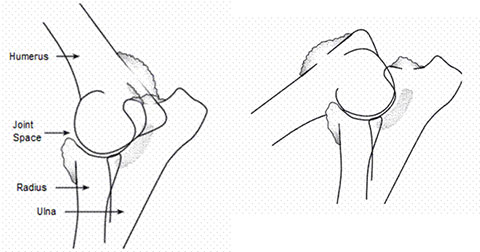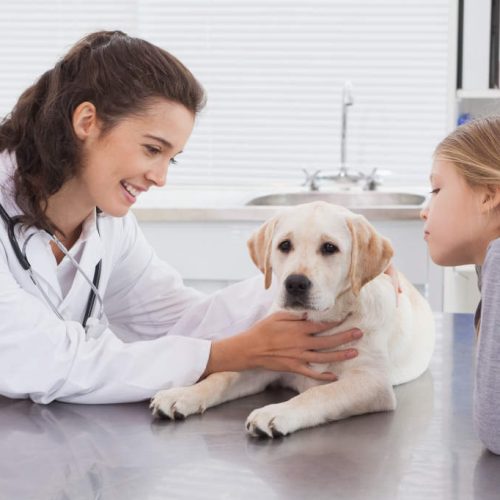
Common Allergies in Labrador Retrievers
In this article we are going to take a look at common allergies in Labrador Retrievers, and what you can do to help your Lab if he suffers from them.
If you own a Labrador with allergies, you probably look forward to allergy season with as much enthusiasm as tooth extraction.
In addition to their loving natures, exuberant energy, and high intelligence, Labs also have the irritating tendency to develop a number of allergy problems.
Some seasonal, some year-round.
Such conditions are usually treated easily, and knowing how to recognize the signs of allergies in your Labrador Retriever and how to treat them can greatly enhance their quality of life.
In this article, we’ll take a look at the types of allergies they commonly develop, allergy symptoms, and how you can treat them.
What Are The Most Common Allergies Seen In Labs?
Dogs’ immune systems sometimes overreact to allergens, or substances in the environment such as house dust, pollen, food, chemicals, or bacteria. Labradors tend to be more allergic than other dog breeds because their immune systems produce more IgE.
Common allergies in Labs include food allergies, flea allergies, contact allergies, bacterial allergies, and inhalant allergies.
What Are Food Allergies And Food Allergy Symptoms?
Food allergies are caused by allergic reactions to common ingredients in dog food such as beef, corn, soy, fish, wheat, chicken, and chicken eggs.
Veterinarians report that food allergies account for approximately 10% of allergy problems in dogs.
Common symptoms include itchy skin (often around the muzzle or face), hair loss, ear infections, frequent bowel movements, and skin infections.
How Do I Treat My Lab’s Food Allergies?
While the symptoms mentioned above are easily treated with courses of antibiotics, if your
Lab has a food allergy, the symptoms will return when the treatment is stopped because they’re still being exposed to the allergen causing the symptoms.
The easiest way to treat food allergies is to feed your Lab a diet that doesn’t contain the ingredient they’re allergic to.
Your vet can perform allergy tests that will determine which allergens your dog reacts to.
What Should I Feed My Allergic Lab?
Most common dog food brands on the market offer hypoallergenic formulas.
These recipes are free of some of the most common allergens we talked about earlier: corn, soy, beef, chicken, chicken eggs, fish, and wheat.
They might also contain “novel ingredients” which dogs won’t typically have been exposed to before and might be less allergic to.
You can also consider feeding a raw diet consisting of unprocessed meats and veggies.
Whichever method you choose, it’s recommended that you wean your Lab off of their current diet, gradually introducing the new food into their diet to avoid stomach upset.
What Are Flea Allergies and Flea Allergy Symptoms?
Flea allergies, or FAD (flea allergy dermatitis) account for the most common veterinary allergy problems in dogs.
FAD occurs when a flea bites an animal, injecting its saliva into the skin.
Your dog will most likely be susceptible to FAD during the summer months because fleas thrive best in warm temperatures with humidity.
Early warning signs of FAD include itchy, irritated skin. You’ll probably notice your lab scratching quite a lot and possibly biting the affected area, which causes red, inflamed patches of skin called hot spots.
Flea bites occur most often on the back and at the base of the tail. In severe cases, you might notice hair loss, oozing, or dark, crusty skin.
How Do I Treat My Labrador’s Flea Allergy?
The easiest way to prevent FAD is to groom your dog regularly and apply a flea preventative (such as Frontline) during flea season. If your Lab does develop an allergic reaction to a flea bite, there are several remedies for killing fleas instantly that you can learn more about here.
Also make sure to remove all traces of fleas both from him and from your home. Sweep floors and furniture thoroughly, spray your carpets, and consider fogging your house.
Sometimes your Lab can develop a yeast infection as a result of a flea bite, in which case you might notice an unpleasant odor. Vets will often prescribe antibiotics and a short course of prednisone to relieve his itchy skin.
Taking preventative measures, however, and regularly observing your dog for early warning signs during flea season, can help to mitigate the problem.
What Are Contact Allergies and Contact Allergy Symptoms?
Contact allergies occur when your Lab develops an allergic reaction to noxious or irritating substances in the environment; these can include dyes, carpet deodorizers, or antibiotics applied to the skin. Rubber, wool, certain metals (like nickel), poison ivy sap, and salt on the road can also cause allergic reactions.
The allergic reaction usually develops on areas of the skin with little or no hair such as the backs of the paws, the muzzle, and the lower abdomen because these areas of the skin are most likely to come into direct contact with the irritant.
You’ll likely notice that the affected area is very red, with small bumps or blisters.
How Do I Treat My Lab’s Contact Allergy?
In order to treat a contact allergy, your vet needs to use tests to determine what allergen your Lab is reacting to. In an exclusion trial, you’ll need to keep him in a non-carpeted area and keep him or her off the grass. If the condition improves, potential allergens will slowly be reintroduced one by one into the dog’s environment.
Your vet can also perform a patch test, which is administered in one of several ways. A small amount of the allergen is either rubbed on his skin, or onto a bandage that is then placed on the skin. You’ll then observe the area closely for two to five days for signs of reaction.
The easiest way to manage your Labrador’s allergies is to remove the allergen from the environment if possible once it’s determined.
If that’s not possible, you can take certain steps to keep him comfortable and itch-free: use hypoallergenic detergents for the dog’s bedding and stainless steel or glass bowls.
You can also bathe him regularly with a hypoallergenic shampoo. When he does develop allergic reactions, your vet might prescribe a course of antihistamines to relieve symptoms like itching and inflammation.
What Are Inhalant Allergies and Inhalant Allergy Symptoms?
Inhalant allergies (also called atopic allergies or atopy) are the second most common allergy in Labs after FAD and are caused by an allergic reaction to airborne or inhaled allergens like mold, dust, or pollen. Simply put, think of atopy as the canine equivalent of hay fever in people.
Like FAD, inhalant allergies usually affect dogs during the spring and summer months. Atopic Labradors will develop very itchy skin and will usually bite and scratch themselves, often on the legs, face, ears, groin, and armpit areas. Red, irritated skin and hair loss are the most common warning signs as well as yeast infections in the skin and ears.
Your vet will likely perform one of two allergy tests on your dog to determine what is causing the allergic reaction. An intra-dermal or skin allergy test involves injecting a small amount of an allergen into his skin and watching for a reaction.
The second test, the IgE allergy test, involves taking a blood sample from your Lab to test for IgE antibodies against specific airborne allergens. If a high number of IgE antibodies exist, this is usually a sign of an inhalant allergy.
How Do I Treat My Lab’s Inhalant Allergy?
There are several ways to treat inhalant allergies; allergy shots involve a serum containing the allergen to which your dog reacts, and over time, the injections can desensitize them to the allergen, reducing the symptoms.
Your vet might also prescribe anti-inflammatory drugs (such as corticosteroids or antihistamines) to relieve symptoms like itching and skin irritation, but it’s important to note that these drugs treat only the symptoms and not the allergy itself. You can also bathe your dog with hypoallergenic shampoos to help relieve symptoms.
What Are Bacterial Allergies and Bacterial Allergy Symptoms?
Bacterial allergies (also called pyoderma of the skin) usually occur as a secondary infection as a result of the above allergic reactions we’ve discussed.
Since allergies often cause skin irritation and hair loss, your Lab can often develop lesions or inflamed pustules
For these, your vet will likely proscribe topical medications like ointments and sprays as well as a round of antibiotics.
If the infection is severe or doesn’t respond to these treatments, a skin biopsy or scraping might be performed.
The vet will look for evidence that the infection is symptomatic of a more serious medical condition.
Summary
Like people, dogs often develop allergic reactions to substances in the environment like house dust, pollen, food ingredients, or insect bites.
Labs are extremely prone to allergies because their immune systems produce high quantities of IgE, the protein that develops as a response to allergens.
The five most common types of allergies are food allergies, flea allergies, contact allergies, inhalant allergies, and bacterial allergies. Most allergies are easily treated with antibiotics and antihistamines and by removing the allergen from your Lab’s environment if possible.





